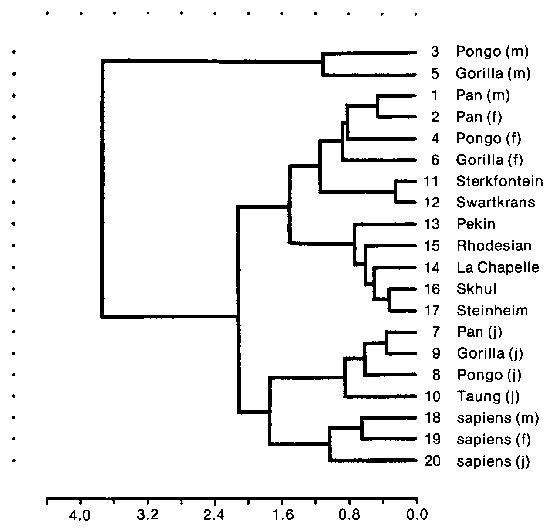| 390 HETEROCHRONY AND PAEDOMORPHOSIS
cines group at the other extreme. The skulls of adult human females and males, despite their large size, fall far closer to the juveniles. The unusual position of adult humans on an axis expressing ontogeny demonstrates our retention, in a multivariate sense, of a morphology associated with juvenile stages of other higher primates. A cluster analysis, emphasizing differences in shape for the calculation of distances, places pongid juveniles closer to adult humans than to their own adult forms (Fig. 69). Of Correlation The morphological argument seeks to overwhelm by sheer quantity: it operates under the hidden assumption that the enumerated
Fig. 69. Cluster analysis of pongid and hominid skulls empha- |
